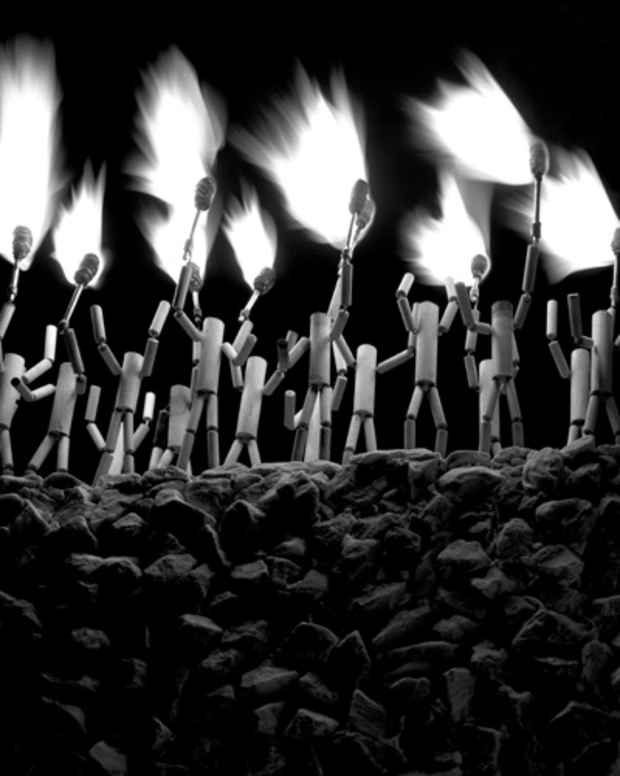"Ten Years Hunting (Part One)" Exhibition
Parker's Box

This event has ended.
For many of these artists, the analysis, gentle manipulation and understanding of viewer perception becomes almost an art form and a medium in its own right. This is ultimately far more significant than the "vehicle" of painting, drawing, object-making etc. that may be chosen to orchestrate the viewer's experience of the work. The subtext of dealing with the problematics of painting and sculpture (even when the work is in a completely opposing medium) also seems to regularly provide recurrent common ground.
Irish artist, Caroline McCarthy is particularly involved with these questions, as graphically proved by the plastic detergent bottles whose bright plastic colors she painted over, in black, silver and grey, for her 2002 exhibition at the gallery. The display of these strange "electronic" devices provoked a visit from the NYPD who requested to see our "electronics retailer" permit! Wonderful confirmation of McCarthy's finely-tuned but extremely effective camouflaging technique. In Ten Years Hunting, we are presenting McCarthy's Mirage, a life-size projection of an illuminated drinks machine.
Stefan Sehler and Jason Glasser both make reverse paintings on glass/Plexiglas. While Sehler efficiently blurs the boundaries between figurative order and abstract chaos, and Glasser favors more painterly scenes of primitive science-fiction, both use the flattening effect of the reverse glass technique to deny viewer access to the real materiality of the paintings. This ironically and powerfully heightens the viewer's perception of this material presence, and by extension the subject matter it contains. Perceived materiality has a similarly strong role to play in the work of Beatriz Barral, whose 2003 exhibition Superaccesspace relied on monumental geometric mural painting to transform the gallery space. While we have reverted to smaller paintings for this exhibition, they can be seen as studies for Barral's transformations of the architectural environment with color, in which viewers found themselves physically "inside the painting".
References to more classical painting have a strong presence in the works presented by Samuel Rousseau, and Joshua Stern, though in these works, no paint is present. Rousseau's Electronic Tapestry, hijacks the kitsch tapestry interpretation of an old master portrait by replacing its eyes with moving pixilated ones on a hidden video screen. Stern's photographs of miniature model remakes of Vermeer interiors audaciously replace the characters with "expressionless" stick figures, rising to the challenge of injecting them with unexpectedly high levels of emotion.
Among the multitude of space program paraphernalia (and parody) generated by the practice of Steven Brower, versions of a scaled down spacesuit intended for a "child or chimp", activate a suspension of belief that heightens the viewer's involvement with both the object and its wider symbolism. Codes, keys and symbols that can effortlessly draw the spectator into intimate dialogue with a work of art, are often in operation here. Mike Rogers' 2002-5 photograph, TP, depicts a Teepee made from pages of the Wall Street Journal that is floating on the lake close to the house of Thomas Paine (T.P.). Tere Recarens fusion of her own life and art in diverse works is here represented by some of her childlike Panther and Monkey drawings, which hold their own complex, partly psychological symbolism, as indeed do the Green Flash ink drawings of Géraldine Pastor-Lloret, which return us to the ambiguity that seems dear to Parker's Box, wherein the material, possibly abstract qualities of medium can easily morph into something too real for comfort.
Media
Schedule
from April 23, 2010 to May 02, 2010
Opening Reception on 2010-04-23 from 18:00 to 21:00